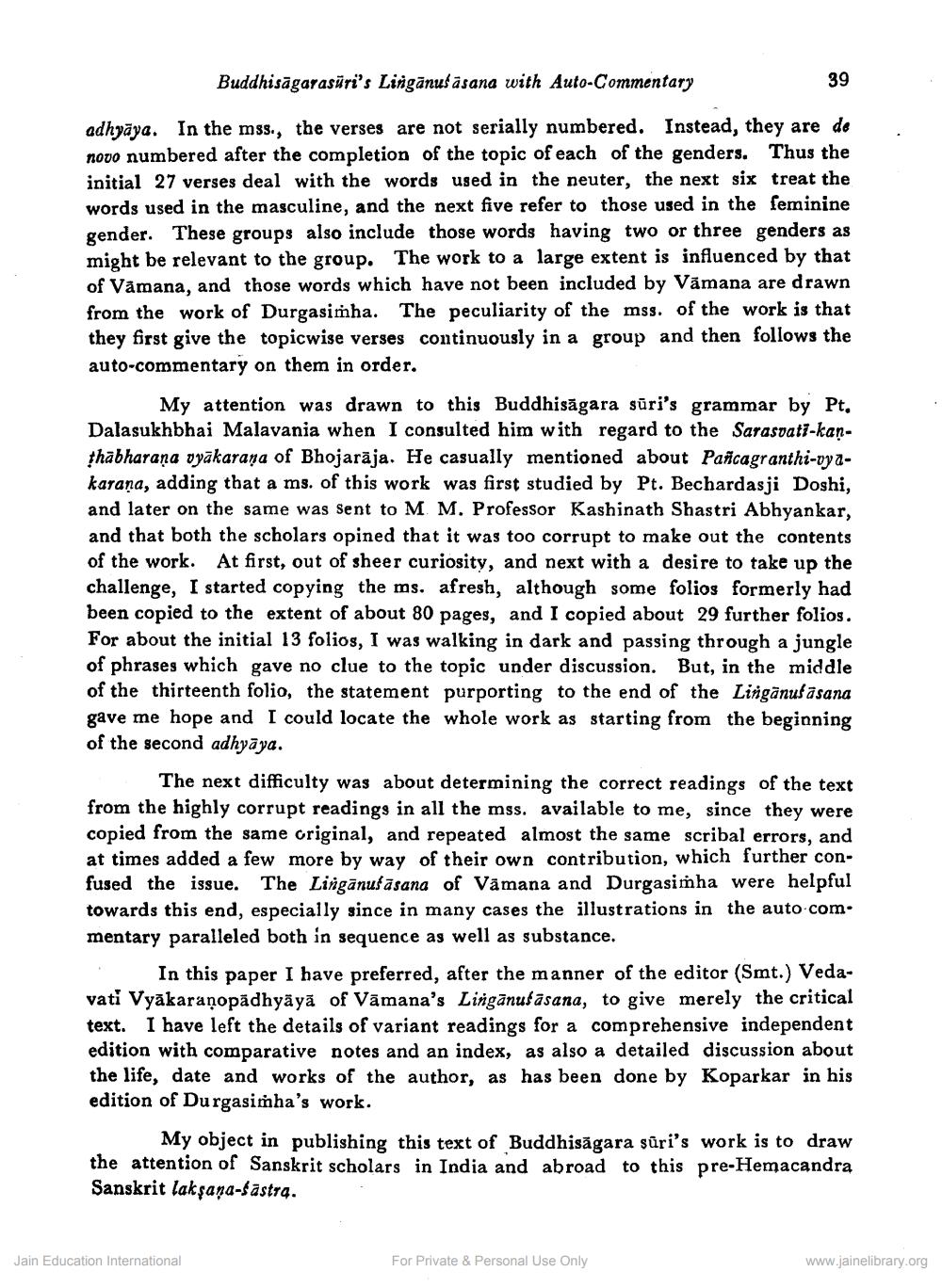Book Title: Buddhisagarsuri Linganusasan with Auto Commentary Author(s): N M Kansara Publisher: Z_Aspect_of_Jainology_Part_2_Pundit_Bechardas_Doshi_012016.pdf View full book textPage 2
________________ Buddhisāgarasüri's Lingānus asana with Auto-Commentary 39 adhyāya. In the mss., the verses are not serially numbered. Instead, they are de novo numbered after the completion of the topic of each of the genders. Thus the initial 27 verses deal with the words used in the neuter, the next six treat the words used in the masculine, and the next five refer to those used in the feminine gender. These groups also include those words having two or three genders as might be relevant to the group. The work to a large extent is influenced by that of Vamana, and those words which have not been included by Vámana are drawn from the work of Durgasimha. The peculiarity of the mss. of the work is that they first give the topicwise verses continuously in a group and then follows the auto-commentary on them in order. My attention was drawn to this Buddhisāgara sūri's grammar by Pt. Dalasukhbhai Malavania when I consulted him with regard to the Sarasvati-kanthabharaṇa vyākaraņa of Bhojarāja. He casually mentioned about Pancagranthi-vyakarana, adding that a ms. of this work was first studied by Pt. Bechardasji Doshi, and later on the same was sent to M M. Professor Kashinath Shastri Abhyankar, and that both the scholars opined that it was too corrupt to make out the contents of the work. At first, out of sheer curiosity, and next with a desire to take up the challenge, I started copying the ms. afresh, although some folios formerly had been copied to the extent of about 80 pages, and I copied about 29 further folios. For about the initial 13 folios, I was walking in dark and passing through a jungle of phrases which gave no clue to the topic under discussion. But, in the middle of the thirteenth folio, the statement purporting to the end of the Lingānus asana gave me hope and I could locate the whole work as starting from the beginning of the second adhyāya. The next difficulty was about determining the correct readings of the text from the highly corrupt readings in all the mss. available to me, since they were copied from the same criginal, and repeated almost the same scribal errors, and at times added a few more by way of their own contribution, which further confused the issue. The Lingānušāsana of Vamana and Durgasimha were helpful towards this end, especially since in many cases the illustrations in the auto.com. mentary paralleled both in sequence as well as substance. In this paper I have preferred, after the manner of the editor (Smt.) Vedavati Vyākaraṇopādhyāyā of Vāmana's Lingānušāsana, to give merely the critical text. I have left the details of variant readings for a comprehensive independent edition with comparative notes and an index, as also a detailed discussion about the life, date and works of the author, as has been done by Koparkar in his edition of Durgasimha's work. My object in publishing this text of Buddhisāgara sūri's work is to draw the attention of Sanskrit scholars in India and abroad to this pre-Hemacandra Sanskrit laksana-śāstra. Jain Education International For Private & Personal Use Only www.jainelibrary.orgPage Navigation
1 2 3 4 5 6 7 8 9 10
